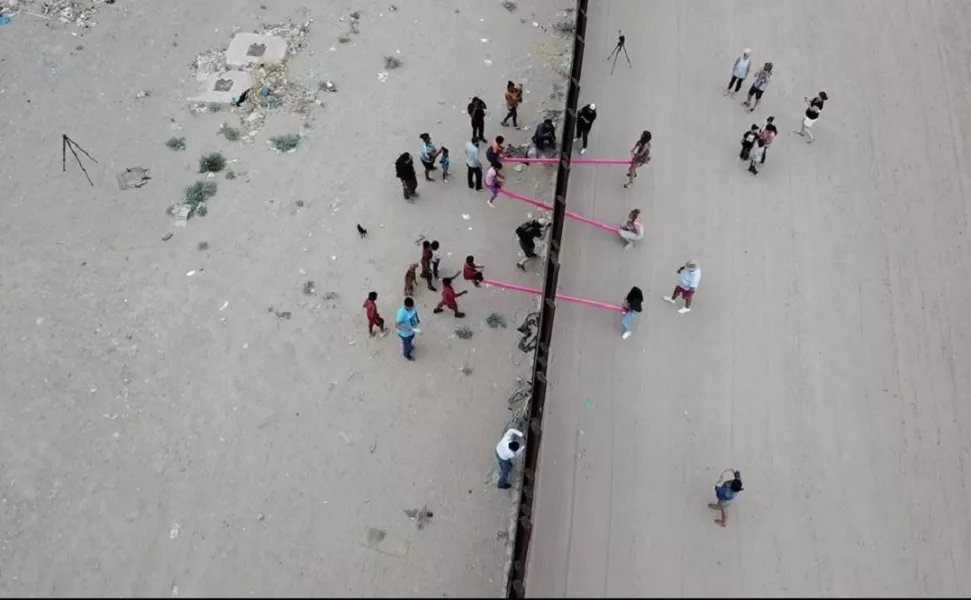A collection of see-saws that briefly allowed children on both sides of the US-Mexico border wall to play together has won a prize from London’s Design Museum.
The three pink see-saws were installed through the slats of the wall, with one seat in El Paso, Texas, and the other in Ciudad Juarez, Mexico.
The artwork was put up on July 28, 2019, and removed from the politically charged border barrier after less than an hour.
Drumroll 🥁 | 74 contenders, six design categories from architecture to fashion, seven judges and only one overall winner...the #BeazleyDesignsoftheYear Award goes to #TeeterTotterWall. Congratulations to @CChopeke! 👏👏 > https://t.co/BlSm5B0YZp@BeazleyGroup pic.twitter.com/4t6SJkqRvU
— The Design Museum (@DesignMuseum) January 19, 2021
Advertisement
The Design Museum named the project as the overall winner of the Beazley Designs of the Year competition for 2020, which considered 74 projects by designers from around the world.
“Teeter-Totter Wall” was designed by California architects Ronald Rael and Virginia San Fratello with help from Colectivo Chopeke, an artists’ collective in Juarez.
“It encouraged new ways of human connection and struck a chord that continues to resonate far beyond El Paso in the USA and Juarez in Mexico,” museum director Tim Marlow said in announcing the prize.
“It remains an inventive and poignant reminder of how human beings can transcend the forces that seek to divide us.”

The see-saws were installed amid the heated debate over US President Donald Trump’s plan to build a wall along the almost 2,000-mile US-Mexico border from the Pacific Ocean to the Gulf of Mexico.
“We thought this would be a moment to show to the world a very important reality of the border, which is that the border isn’t a desolate place where no one lives,” Mr Rael, a professor of architecture at the University of California told a university publication in 2019.
“This is a world where women live and children live and that we can use play as a kind of vehicle for activism.”







